
Food Allergy: Adverse Reactions to Foods and Food Additives, Fourth Edition By
2008 | 622 Pages | ISBN: 1405151293 | PDF | 11 MB
Applying a scientific approach this unique book covers both pediatric and adult adverse reactions to foods and food additives. Following the successful formula of the previous editions, Food Allergy has established itself asthe comprehensive reference for those treating patients with food allergy or suspected allergy. The book has been thoroughly revised and updated presenting new chapters devoted to food biotechnology and genetic engineering, seafood toxins, future approaches to therapy and hidden food allergens. Food Allergy, fourth edition, is divided into five sections featuring key concept boxes for each chapter. Displayed in a logical manner the book is a practical, readable reference for use in the hospital or private practice setting.Content: Chapter 1 Mucosal Immunity (pages 1-14): Shradha Agarwal and Lloyd MayerChapter 2 The Immunological Basis of IgE?Mediated Reactions (pages 15-28): Gernot Sellge and Stephan C. BischoffChapter 3 The Immunologic Basis of Non?IgE?Mediated Reactions (pages 29-42): Ashraf Uzzaman and Hirsh D. KomarowChapter 4 Food Allergens: Molecular and Immunological Characteristics (pages 43-61): Heimo Breiteneder and E.N. Clare MillsChapter 5 Biotechnology and Genetic Engineering (pages 62-81): Gary A. Bannon, James D. Astwood, Raymond C. Dobert and Roy L. FuchsChapter 6 Food Allergen Thresholds of Reactivity (pages 82-89): Steve L. Taylor and Jonathan O'B. HourihaneChapter 7 Development of Immunological Tolerance to Food Antigens (pages 90-98): Bengt BjorkstenChapter 8 The Spectrum of Allergic Reactions to Foods (pages 99-109): Stacie M. Jones and A. Wesley BurksChapter 9 Eczema and Food Hypersensitivity (pages 110-123): David M. Fleischer and Donald Y. M. LeungChapter 10 Other IgE? and Non?IgE?Mediated Reactions of the Skin (pages 124-132): Carsten Bindslev?Jensen and Morten OsterballeChapter 11 Oral Allergy Syndrome (pages 133-143): Julie WangChapter 12 The Respiratory Tract and Food Hypersensitivity (pages 144-156): Philippe A. Eigenmann and John M. JamesChapter 13 Anaphylaxis and Food Allergy (pages 157-170): Hugh A. SampsonChapter 14 Infantile Colic and Food Allergy (pages 171-181): Ralf G. Heine, David J. Hill and Clifford S. HoskingChapter 15 Eosinophilic Esophagitis, Gastroenteritis, and Colitis (pages 182-194): James P. Franciosi, Jonathan E. Markowitz and Chris A. LiacourasChapter 16 Food Protein?Induced Enterocolitis and Enteropathies (pages 195-210): Anna Nowak?WegrzynChapter 17 Gluten?Sensitive Enteropathy (pages 211-222): Alberto Rubio?Tapia and Joseph A. MurrayChapter 18 Occupational Reactions to Food Allergens (pages 223-250): Maxcie Sikora, Andre Cartier, Matthew Aresery, Laurianne Wild and Samuel B. LehrerChapter 19 In Vitro Diagnostic Methods in the Evaluation of Food Hypersensitivity (pages 251-266): Staffan Ahlstedt, Lars Soderstrom and Anita KoberChapter 20 In Vivo Diagnosis: Skin Testing and Challenge Procedures (pages 267-277): Scott H. SichererChapter 21 IgE Tests: In Vitro Diagnosis (pages 278-284): Kirsten BeyerChapter 22 Atopy Patch Testing (pages 285-289): Bodo NiggemannChapter 23 Elimination Diets and Oral Food Challenges (pages 290-297): Scott H. SichererChapter 24 General Approach to Diagnosis: IgE? and Non?IgE?Mediated Reactions (pages 298-309): S. Allan Bock and Hugh A. SampsonChapter 25 Hidden and Cross?Reacting Food Allergens (pages 310-322): Scott H. SichererChapter 26 Controversial Practices and Unproven Methods in Allergy (pages 323-331): Jennifer A. Namazy and Ronald A. SimonChapter 27 Asthma and Food Additives (pages 333-339): Robert K. Bush and Michelle M. MontalbanoChapter 28 Urticaria, Angioedema, and Anaphylaxis Provoked by Food and Drug Additives (pages 340-352): John V. Bosso and Ronald A. SimonChapter 29 Sulfites (pages 353-368): Steve L. Taylor, Robert K. Bush and Julie A. NordleeChapter 30 Monosodium Glutamate (pages 369-376): Katharine M. WoessnerChapter 31 Tartrazine, Azo, and Non?Azo Dyes (pages 377-385): Donald D. StevensonChapter 32 Adverse Reactions to the Antioxidants Butylated Hydroxyanisole and Butylated Hydroxytoluene (pages 386-393): Richard W. WeberChapter 33 Adverse Reactions to Benzoates and Parabens (pages 394-402): John M. Fahrenholz and Keegan M. SmithChapter 34 Food Colorings and Flavors (pages 403-428): Matthew Greenhawt and James L. BaldwinChapter 35 Pharmacologic Food Reactions (pages 429-442): Robert W. Keeton, James L. Baldwin and Andrew M. SingerChapter 36 The Management of Food Allergy (pages 443-460): Anne Munoz?Furlong and Hugh A. SampsonChapter 37 The Natural History of Food Allergy (pages 461-469): Robert A. WoodChapter 38 Prevention of Food Allergy (pages 470-481): Gideon Lack and George Du ToitChapter 39 Diets and Nutrition (pages 482-497): Marion GroetchChapter 40 Food Toxicology (pages 498-507): Steve L. TaylorChapter 41 Seafood Toxins (pages 508-530): Soheil Chegini and Dean D. MetcalfeChapter 42 Neurological Reactions to Foods and Food Additives (pages 531-542): Richard W. WeberChapter 43 Experimental Approaches to the Study of Food Allergy (pages 543-553): M. Cecilia BerinChapter 44 Food Allergy: Psychological Considerations (pages 554-562): Lourdes B. de Asis and Ronald A. SimonChapter 45 Foods and Rheumatological Diseases (pages 563-574): Lisa K. Stamp and Leslie G. ClelandChapter 46 Therapeutic Approaches Under Development (pages 575-583): Miae Oh, Hugh A. Sampson and Xiu?Min LiChapter 47 Food?Dependent Exercise? and Pressure?Induced Syndromes (pages 584-595): Adam N. Williams and Ronald A. Ronald A. Simon Simon
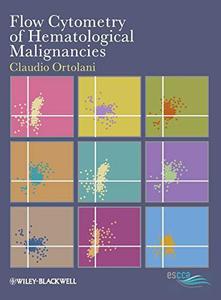
Flow Cytometry of Hematological Malignancies By Claudio Ortolani(auth.)
2011 | 318 Pages | ISBN: 144433588X | PDF | 8 MB
Flow Cytometry of Hematological Malignancies contains an array of graphical outputs produced by the technique in the study of the most (and the least) common diseases. The images included allow you to compare your own results with a third party reference pattern. There is a detailed description of the main leukocyte antigens, together with a description of their distribution amongst normal and abnormal blood cells. The book also provides a comprehensive description of the phenotype of every neoplastic blood disease recorded in the WHO classification system, including all the instructions needed to recognise and classify even the least common entity. Designed to be practical, the book is perfect for quick consultation and is divided into two main sections. Section I deals with the direct object of immunophenotyping, and Section II deals with the ultimate target of the analysis. More than 50 antigens are covered and every antigen is dealt with in three main parts: general features, cytometric features and practical hints. This authoritative and state-of-the-art reference will be invaluable for clinicians directly involved in the diagnosis and analysis of hematological diseases, including hematologists, hematopathologists, oncologists, pathologists and technicians working in diagnostic laboratories.Content: Chapter 1 Antigens (pages 1-157): Chapter 2 Diseases (pages 160-300):
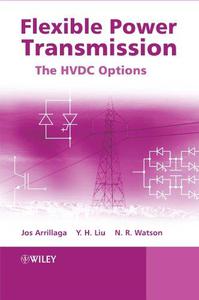
Flexible Power Transmission: The HVDC Options By J. Arrillaga, Y. H. Liu, N. R. Watson(auth.)
2007 | 369 Pages | ISBN: 0470056886 | PDF | 15 MB
The development of power semiconductors with greater ratings and improved characteristics has meant that the power industry has become more willing to develop new converter configurations. These new configurations take advantage of the higher controllability and switching frequencies of the new devices. The next few years will decide which of the proposed technologies will dominate future power transmission systems. Flexible Power Transmission is a comprehensive guide to the high voltage direct current (HVDC) options available, helping the reader to make informed decisions for designing future power transmission systems. The book includes: a full description of the principles and components in existing converter technology, as well as alternative proposals for self-commutating conversion; A review of the state of power semiconductors suited to HVDC transmission and present proposals for multi-level HVDC transmission. a detailed overview of the flexible HVDC methods for improving controllability and increasing power transfer capability in electrical power systems. up-to-date information on thyrisistor-based HVDC technology. coverage of new pulse width modulation (PWM) transmission technology and multi-level voltage source conversion (VSC) and current source conversion (CSC). An excellent reference for professional power engineers, Flexible Power Transmission is also a useful guide for power system researchers as well as lecturers and students in power systems and power electronics disciplines.Content: Chapter 1 Introduction (pages 1-20): Chapter 2 Semiconductor Power Devices (pages 21-56): Chapter 3 Line?Commutated HVDC Conversion (pages 57-95): Chapter 4 Self?Commutating Conversion (pages 97-126): Chapter 5 Pulse Width Modulation (pages 127-140): Chapter 6 Multi?Level Conversion (pages 141-167): Chapter 7 Multi?Level DC Reinjection (pages 169-223): Chapter 8 Line?Commutated CSC Transmission (pages 225-274): Chapter 9 Developments in Line?Commutated HVDC Schemes (pages 275-290): Chapter 10 VSC Transmission (pages 291-326): Chapter 11 Multi?Level VSC and CSC Transmission (pages 327-357):
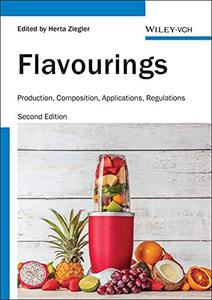
Flavourings: Production, Composition, Applications, Regulations, Second Edition By
2007 | 841 Pages | ISBN: 3527314067 | PDF | 12 MB
The demand for flavourings has been constantly increasing over the last years as a result of the dramatic changes caused by a more and more industrialised life-style: The consumer is drawn to interesting, healthy, pleasurable, exciting or completely new taste experiences. This book draws on the expert knowledge of nearly 40 contributors with backgrounds in both industry and academia and provides a comprehensive insight into the production, processing and application of various food flavourings. Methods of quality control and quality management are discussed in detail. The authors also focus on conventional and innovative analytical methods employed in this field and, last but not least, on toxicological, legal, and ethical aspects. Up-to-date references to pertinent literature and an in-depth subject index complete the book.
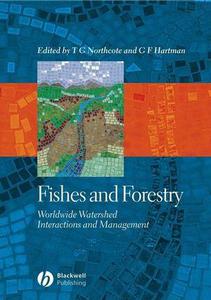
Fishes and Forestry: Worldwide Watershed Interactions and Management By
2004 | 793 Pages | ISBN: 0632058099 | PDF | 8 MB
Many species of fish occupying inland waters reside in watersheds that were or still are surrounded by forests and are dependent in major ways upon such cover. The interactions between fishes and forests are complex, multifaceted, dynamic processes involving most inland surface waters, forests, subsurface waters, geology and soils, climate and its changes, and the biotic components of the relevant ecosystems. These interactions also include the aspects of forestry tied to human development, economics, population growth and even philosophies.Fishes and Forestry is truly a landmark publication. The editors, Professors Northcote and Hartman, have drawn together and carefully edited chapters written by 56 scientists from around the world, covering a vast wealth of information never before appearing within the covers of one book. Following an introductory chapter, this exceptional work is broadly divided into sections covering: the ecology of forests, streams, lakes and estuaries; fish biology and ecology; forestry activities and their effects on aquatic systems and fishes; 14 chapters covering examples of fish-forestry interactions from around the world and a final section covering means of effecting better fish-forestry interactions.Fishes and Forestry is an essential purchase for all those involved in inland fisheries, forestry and their interaction, including fisheries scientists, fish biologists, ecologists, environmental scientists and forestry scientists. Libraries in all universities and research establishments where these subjects are studied and taught should have several copies on their shelves.Content: Chapter 1 An Introductory Overview of Fish?Forestry Interactions (pages 1-15): T. G. Northcote and G. F. HartmanChapter 2 Forest Ecology (pages 17-43): J. P. KimminsChapter 3 Elements of Stream Ecosystem Process (pages 44-66): G. F. Hartman and R. E. BilbyChapter 4 Fundamentals of Lake Ecology Relevant to Fish?Forestry Interactions (pages 67-91): T. G. NorthcoteChapter 5 Fundamental Aspects of Estuarine Ecology Relevant to Fish?Forestry Interactions (pages 92-105): T. G. Northcote and M. C. HealeyChapter 6 Fish Life History Variation and Stock Diversity in Forested Watersheds (pages 107-122): T. G. NorthcoteChapter 7 Fish Migration and Passage in Forested Watersheds (pages 123-142): T. G. Northcote and S. G. HinchChapter 8 Aspects of Fish Reproduction and Some Implications of Forestry Activities (pages 143-168): G. F. Hartman and T. E. McmahonChapter 9 Foraging Ecology: from the Fish to the Forest (pages 169-191): M. Karagosian and N. H. RinglerChapter 10 Forest Harvest and Transportation (pages 193-215): P. Schiess and F. KrogstadChapter 11 Silviculture (pages 216-240): J. E. BarkerChapter 12 Manufacturing Processes and their Impact on Effluent Discharges (pages 241-267): N. McCubbin, E. R. Hall and K. J. HallChapter 13 Effects of Forest Management Activities on Watershed Processes (pages 269-302): G. F. HartmanChapter 14 Effects of Forestry on the Limnology and Fishes of Lakes (pages 303-319): T. G. Northcote, M. Rask and J. LeggettChapter 15 Effects of Forestry on Estuarine Ecosystems Supporting Fishes (pages 320-335): C. D. Levings and T. G. NorthcoteChapter 16 Environmental Effects of Effluents from Pulp and Paper Mills (pages 336-361): K. R. MunkittrickChapter 17 Fish?Forestry Interactions in Oregon, Washington and Alaska, USA (pages 363-388): J. D. Hall, C. J. Cederholm, M. L. Murphy and K. V. KoskiChapter 18 Fish?Forestry Interaction Research in Coastal British Columbia ? the Carnation Creek and Queen Charlotte Islands Studies (pages 389-412): P. J. Tschaplinski, D. L. Hogan and G. F. HartmanChapter 19 Forestry and Fish in the Boreal Region of Canada (pages 413-438): R. J. Steedman, W. M. Tonn, C. A. Paszkowski and G. J. ScrimgeourChapter 20 Fish?Forestry Interactions in Freshwaters of Atlantic Canada (pages 439-462): R. A. Cunjak, R. A. Curry, D. A. Scruton and K. D. ClarkeChapter 21 Interactions Between Forests and Fish in the Rocky Mountains of the USA (pages 463-484): K. D. Fausch and M. K. YoungChapter 22 Fish?Forestry Interface: An Overview of Mexico (pages 485-507): A. Sanchez?Velez and R. M. GarciA?NunezChapter 23 Fishes?Forestry Interactions in Tropical South America (pages 509-534): C.A.R.M. Araujo?Lima, N. Higuchi and W. BarrellaChapter 24 Europe ? With Special Reference to Scandinavia and the British Isles (pages 535-559): D. T. Crisp, T. Eriksson and A. PeterChapter 25 Freshwater Fishes and Forests in Japan (pages 560-580): M. Inoue and F. NakamuraChapter 26 Fish?Forest Harvesting Interactions in Perhumid and Monsoonal Southeast Asia (Sundaland) (pages 581-607): J. H. Dick and K. Martin?SmithChapter 27 Regional case Studies in Fish?Forest Harvesting Interactions: Malaysian and Indonesian Borneo and Cambodia (pages 608-631): J. H. Dick and K. Martin?SmithChapter 28 Interactions: Mangroves, Fisheries and Forestry Management in Indonesia (pages 632-653): D. G. Bengen and I. M. DuttonChapter 29 Forestry Interactions - New Zealand (pages 654-677): B. J. Hicks, G. J. Glova and M. J. DuncanChapter 30 Australia (pages 678-703): W. D. Erskine and J. H. HarrisChapter 31 Guidelines, Codes and Legislation (pages 705-728): K. Moore and G. BullChapter 32 Forest Management and Watershed Restoration: Repairing Past Damage is Part of the Future (pages 729-745): G. F. HartmanChapter 33 Better and Broader Professional, Worker and Public Education in Fish?Forestry Interaction (pages 746-758): T. G. Northcote and J. D. HallChapter 34 Towards a New Fish?Forestry Interaction in the World's Watersheds (pages 759-782): T. G. Northcote and G. F. Hartman
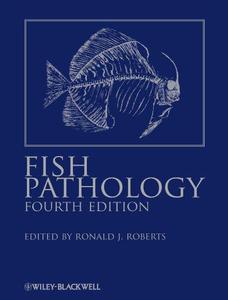
Fish Pathology, Fourth Edition By
2012 | 587 Pages | ISBN: 1444332821 | PDF | 18 MB
Fish Pathology is the definitive, classic and essential book on the subject, providing in-depth coverage across all major aspects of fish pathology. This new, fully updated and expanded fourth edition builds upon the success of the previous editions which have made Fish Pathology the best known and most respected book in the field, worldwide.Commencing with a chapter covering the aquatic environment, the book provides comprehensive details of the anatomy and physiology of teleosts, pathophysiology and sytematic physiology, immunology, neoplasia, virology, parasitology, bacteriology, mycology, nutritional pathology and other non-infectious diseases. A final chapter provides extremely useful details of the most widely-used and trusted laboratory methods in the area. Much new infomation is included in this new edition, including enhanced coverage of any diseases which have become commercially significant since publication of the previous edition Beautifully illustrated in full colour throughout with many exceptional photographs, Fish Pathology, Fourth Edition, is an essential purchase for fish pathologists, fish veterinarians, biologists, microbiologists and immunologists, including all those working in diagnostic services worldwide. Personnel working in fish farming and fisheries will also find much of great use and interest within the book's covers. All libraries in universities and research establishments where biological and veterinary sciences are studied and taught should have copies of this landmark publication on their shelves.Content: Chapter 1 The Aquatic Environment (pages 1-16): R. J. RobertsChapter 2 The Anatomy and Physiology of Teleosts (pages 17-61): R.J. Roberts and A.E. EllisChapter 3 The Pathophysiology and Systematic Pathology of Teleosts (pages 62-143): R.J. Roberts and H.D. RodgerChapter 4 The Immunology of Teleosts (pages 144-166): C.J. Secombes and A.E. EllisChapter 5 Neoplasia of Teleosts (pages 167-185): R.J. RobertsChapter 6 The Virology of Teleosts (pages 186-291): D.A. Smail and E.S. MunroChapter 7 The Parasitology of Teleosts (pages 292-338): R. WoottenChapter 8 The Bacteriology of Teleosts (pages 339-382): R.J. RobertsChapter 9 The Mycology of Teleosts (pages 383-401): R.J. RobertsChapter 10 The Nutritional Pathology of Teleosts (pages 402-424): R.W. HardyChapter 11 Miscellaneous Non?Infectious Diseases (pages 425-438): R.J. RobertsChapter 12 Laboratory Methods (pages 439-481): R.J. Roberts, D.A. Smail and E.S. Munro
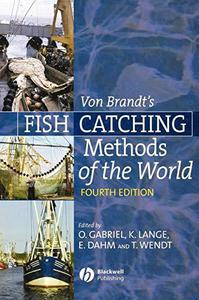
Fish Catching Methods of the World, Fourth Edition By
2005 | 533 Pages | ISBN: 0852382804 | PDF | 10 MB
In the sixteen years since the last edition of Von Brant's classic work was published, fishing and fisheries have undergone vast changes. Not only has there been great progress in the development of new tools, materials and techniques, but the industry has seen an increasing need to address controversial issues such as declining fish stocks, enormous quantities of bycatch and discard and the impact of towed fishing gear on the environment. Fully revised and updated to reflect such changes, the fourth edition of this widely read and popular book offers:A unique, comprehensive survey of the evolution of fishing methods throughout the world Approximately 750 illustrations showing the extensive range of methods, techniques and equipment used in fishing across the globe Fishing gear classified according to the FAO system Additional chapters: Fishing Effects on Fish Stocks and Environment and Fishery and Gear ResearchAll researchers, fisheries scientists, fisheries students, administrators and libraries in universities and research establishments where fish and fisheries are studied and taught will find this book a valuable addition to their shelves. Commercial and sports fishermen will also find Fish Catching Methods of the World a fascinating and vital reference.Content: Chapter 1 Catching Methods in Fisheries: An Introduction (pages 1-11): Chapter 2 Fishing by Gathering (pages 12-20): Chapter 3 Male and Female Divers (pages 21-30): Chapter 4 Animals as a Help in Fisheries (pages 31-41): Chapter 5 Fish Harvesting After Stupefying (pages 42-52): Chapter 6 Spearing, Harpooning and Shooting Fish (pages 53-75): Chapter 7 Fishing with Clamps, Tongs, Rakes and Wrenching Gear (pages 76-82): Chapter 8 Line Fishing: Basic Implements (pages 83-104): Chapter 9 Line Fishing: Gear and Methods (pages 105-135): Chapter 10 Fishing for Sport and Recreation (pages 136-149): Chapter 11 Attracting, Concentrating and Frightening Fish (pages 150-163): Chapter 12 Pole?Hooks and Rippers (pages 164-180): Chapter 13 Net Material and the Art of Net?Making (pages 181-189): Chapter 14 Natural and Artificial Shelters (pages 190-198): Chapter 15 Permanent and Temporary Barriers (pages 199-214): Chapter 16 Trapping (pages 215-251): Chapter 17 Fishing in the Air (pages 252-263): Chapter 18 Mechanical Fishing Gear: Traps, Lines and Snares (pages 264-274): Chapter 19 Gillnetting (pages 275-290): Chapter 20 Entangling Nets (pages 291-304): Chapter 21 The Drive?in Fishery (pages 305-313): Chapter 22 Cover Pots and Cast Nets (pages 314-328): Chapter 23 Liftnets and Fish Wheels (pages 329-349): Chapter 24 From the Scoop Basket to the Stow Net (pages 350-375): Chapter 25 Dredges and Beamtrawls (pages 376-391): Chapter 26 Fishing with Bottom Trawls (pages 392-413): Chapter 27 Trawl Fisheries in three Dimensions: Fishing with Mid?Water Trawls (pages 414-430): Chapter 28 Seining in Fresh and Sea Water (pages 431-448): Chapter 29 Fish Shoals and Surrounding Nets (pages 449-472): Chapter 30 Fishing Systems and Harvesting Machines (pages 473-482): Chapter 31 Fishery and Gear Research (pages 483-492): Chapter 32 Fishing Effects on Fish Stocks, Other Marine Animals and the Environment (pages 493-506):
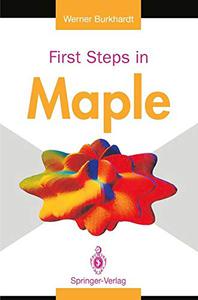
First Steps in Maple by Werner Burkhardt
English | PDF | 1994 | 127 Pages | ISBN : 3540198741 | 6.9 MB
Maple is a computer algebraic system with a fast-growing number of users in schools, universities, and other institutions. Intended for anyone who is encountering Maple for the first time, First Steps in Maple provides a detailed step-by-step introduction, teaching by way of examples taken from many areas of mathematics. It is particularly suitable for undergraduates, and has self-test problems (with solutions) for each chapter.

Fire Safe Use of Wood in Buildings: Global Design Guide
English | 2022 | ISBN: 1032040394 | 487 Pages | PDF (True) | 82 MB
This book provides guidance on the design of timber buildings for fire safety, developed within the global network Fire Safe Use of Wood (FSUW) and with reference to Eurocode 5 and other international codes. It introduces the behaviour of fires in timber buildings and describes strategies for providing safety if unwanted fires occur. It provides guidance on building design to prevent any fires from spreading while maintaining the load-bearing capacity of structural timber elements, connections and compartmentation. Also included is information on the reaction-to-fire of wood products according to different classification systems, as well as active measures of fire protection, and quality of workmanship and inspection as means of fulfilling fire safety objectives.
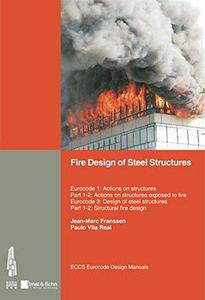
Fire Design of Steel Structures: Eurocode 1: Actions on structures Part 1-2 - General actions - Actions on structures exposed to fire Eurocode 3: Design of steel structures Part 1-2 - General rules - Structural fire design By Jean?Marc Franssen, Paulo Vila Real(auth.)
2010 | 447 Pages | ISBN: 3433029741 | PDF | 8 MB
This book explains and illustrates the rules that are given in the Eurocode for designing steel structures subjected to fire. After the first introductory chapter, Chapter 2 explains how to calculate the mechanical actions (loads) in the fire situation based on the information given in EN 1990 and EN 1991. Chapter 3 presents the models to be used to represent the thermal action created by the fire. Chapter 4 describes the procedures to be used to calculate the temperature of the steelwork from the temperature of the compartment and Chapter 5 shows how the information given in EN 1993-1-2 is used to determine the loan bearing capacity of the steel structure. The methods use to evaluate the fire resistance of bolted and welded connections are described in Chapter 7. Chapter 8 describes a computer program called "Elefir-EN" which is based on the simple calculation model given in the Eurocode and allows designers to quickly and accurately calculate the performance of steel components in the fire situation. Chapter 9 looks at the issues that a designer may be faced with when assessing the fire resistance of a complete building. This is done via a case study and addresses most of the concepts presented in the earlier Chapters. The concepts and fire engineering procedures given in the Eurocodes may see complex those more familiar with the prescriptive approach. This publication sets out the design process in a logical manner giving practical and helpful advice and easy to follow worked examples that will allow designer to exploit the benefits of this new approach to fire design.Content: Chapter 1 Introduction (pages 1-5): Chapter 2 Mechanical Loading (pages 7-16): Chapter 3 Thermal Action (pages 17-44): Chapter 4 Temperature in Steel Sections (pages 45-98): Chapter 5 Mechanical Analysis (pages 99-233): Chapter 6 Advanced Calculation Models (pages 235-250): Chapter 7 Joints (pages 251-266): Chapter 8 The Computer Program "Elefir?EN" (pages 267-292): Chapter 9 Case Study (pages 293-310):


